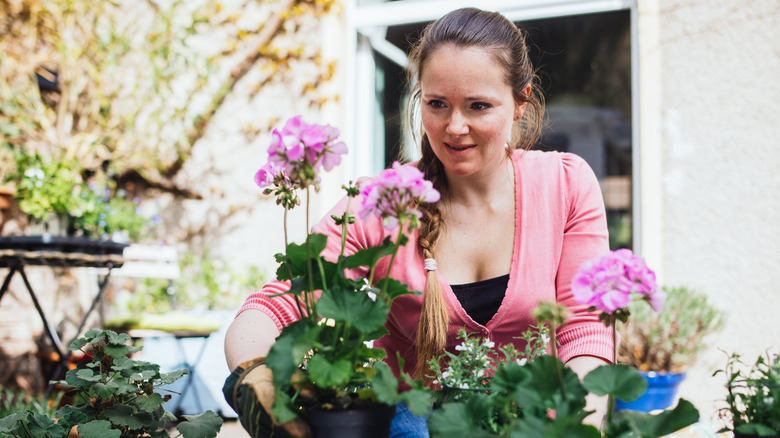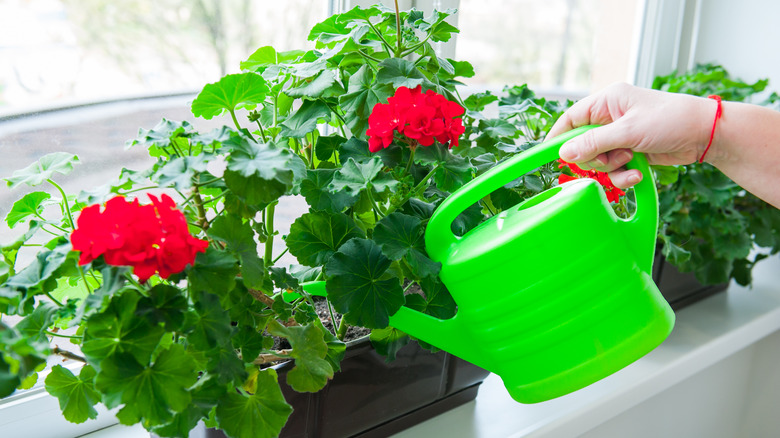How Often To Water Your Geranium Plants For Beautiful & Thriving Blooms
Geraniums (Pelargonium) are iconic mainstays in American home gardens. Not only do they come in a variety of colors, but they also range in sizes between several inches and several feet tall. These features can certainly give you options for versatility when planting the flowering plants around your home. The beauty of their blooms is another one of the top reasons you should plant geraniums in your garden. But if your geranium plants are not looking so good lately despite daily watering, there's a chance that you may be providing them with too much water. As a rule of thumb, geraniums do need regular watering, but they will not thrive if their soil has too much moisture.
When you see plants that look wilted, you might water them immediately in hopes that they will come back to life. In fact, wilting, yellowing, and falling leaves are indeed common signs your geraniums could use some more water. On the flipside, though, seeing a geranium plant with spotted leaves could be a sign that you are providing too much water. In fact, over-watering is among the reasons your geraniums may be dying. These plants are susceptible to a variety of diseases that can develop from too much moisture, including bacterial blight. Common signs of these problems include yellow spots on leaves, rotting stems, and loss of leaves. Geraniums are also prone to root rot due to overwatering, and this fungal disease can cause wilting, yellowing leaves, and stunted growth. Since these symptoms are similar to a lack of water, it's important to verify that your geraniums do indeed need water based on current soil moisture.
The ideal watering schedule for healthy geraniums
Even if you think you've learned everything you need to know before planting geraniums, it's important to keep tabs on these plants and to look for clues that something may need to be adjusted with their care. This includes your watering schedule. As with many other types of plants, geraniums need the most amount of water soon after planting to help them get established. No matter what the age of your plants, though, geraniums do not generally require daily watering. These plants also need even less water during rainy or cooler weather.
To that end, know that there's no set watering schedule for geraniums. Instead, you will need to determine when your geraniums need water by checking the soil for moisture. Geraniums thrive best when their soil can dry completely between watering sessions. For container-grown geraniums, make sure the plants are in large enough pots to accommodate their roots, soil, and water. These should also have large drainage holes to allow the soil to dry out in between each watering session. For best results, water your geraniums early in the morning so the plants can dry throughout the day, and direct water to the soil only. This also reduces the risk of plant diseases.
Aside from the right amount of water, geraniums also need a minimum of four hours of full sun per day, as well as well-draining soil. Your geraniums may require fertilizer every month or so to ensure they have enough nitrogen, but you should consider testing the soil first. USDA hardiness zones vary based on cultivar, with some suited for zones 3 to 11.

